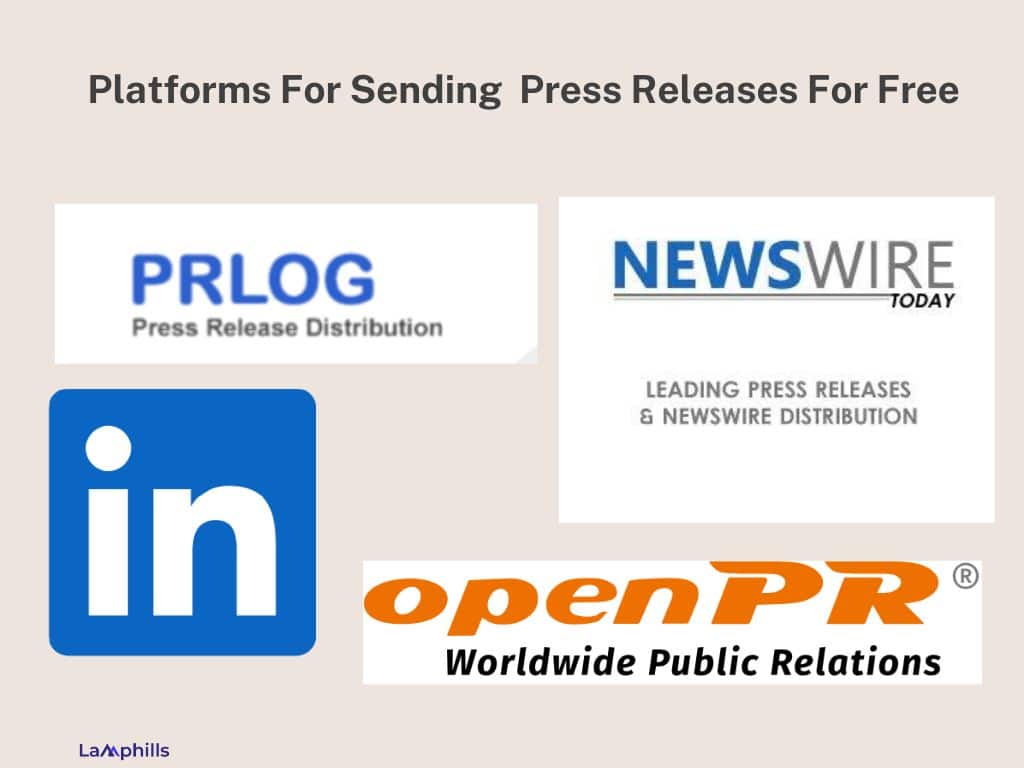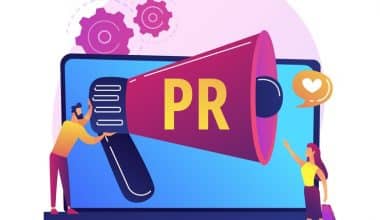Are you ready to make a splash with your latest news or announcement? Looking to get your message out to the media and the public? Sending out a press release can be a powerful way to share your story and attract attention to your business or cause. But where should you send your press release to ensure it reaches the right audience? Don’t worry, I’ve got you covered with my expert tips on how to send press releases in 9 simple steps, for free and paid. From finding the right media outlets to crafting the perfect pitch, I’ll guide you through it all. So, let’s dive in and get your news in front of the right people!
Key Points
- Press releases are official announcements sent to media outlets to share newsworthy information about a company, organization, event, or product.
- Newspapers, magazines, websites, radio stations, and TV channels help to cover different topics.
- Journalists, editors, and producers are part of media outlets needed to edit and publish press releases that draw audiences.
- Reputable press releases distribution services like PR Newswire, NewswireToday, PRLog, and ClickPress also help reach a broader audience and increase your chances of media coverage.
- Follow up with the media after sending a press release to provide additional information or answer any questions they may have.
Where To Send Press Release In 9 Steps (My Expert Tips)
As a seasoned professional, I understand the importance of knowing where to send press releases to maximize its impact and reach. Assuming you are launching a new product and want to generate buzz and media coverage through a well-crafted press release, here are the things you need to do:
Step #1: Identify Your Target Audience
The first step in sending out a press release is to clearly define your target audience. To identify your target audience, here are the things you need to do. First, consider the demographics, interests, and characteristics of the individuals or groups most interested in your news. This may include factors such as age, gender, location, occupation, and preferences.
For example, I always put myself in the shoes of my audience. Then, I ask myself questions such as: Who would be most interested in this news? What demographic does my news appeal to? What are their interests and preferences? With these questions, I can create a targeted and tailored message that captures the attention of my audience.
So, if I am launching a new tech product, my target audience may include technology enthusiasts, early adopters, and industry professionals. In crafting my press release, I would use language and key points that speak directly to this audience. Also, highlighting the product’s innovative features and benefits that would appeal to them.
By understanding my target audience, I can ensure my press release is engaging, relevant, and impactful. Then, increasing the chances of it being picked up and covered by the media.
Step #2: Research Relevant Media Outlets
Once you have defined your target audience, research relevant media outlets that cater to that demographic. This may include industry-specific publications, local newspapers, online blogs, or trade magazines. I observed that where your audience goes to consume information is key to creating effective communication strategies.
For instance, if I am targeting a young adult demographic keen on technology and gadgets, I would explore online blogs such as TechCrunch or Gizmodo. These platforms often have a large following of tech enthusiasts who actively engage with the content shared.
Furthermore, if my target audience includes professionals in a specific industry, I would look into industry-specific publications and trade magazines. These outlets are a great way to establish credibility and reach a niche audience interested in industry trends and insights.
Additionally, local newspapers can be a valuable resource for connecting with a more geographically specific audience. Engaging with local publications can help in building a strong presence within a community and establish a sense of trust among residents.
So, if you use these media outlets for your target audience, you can send press releases that resonate with them effectively. Besides, this personalized approach increases the chances of grabbing their attention and engaging them with the information or service you provide.
Step #3: Build Media Lists
Building a media list is a crucial step in any public relations or media outreach campaign. First, I always identify key journalists, editors, and bloggers who cover topics relevant to the client or project I am pitching. This involves thorough research into various media outlets, such as newspapers, magazines, websites, and social media platforms.
Once I have identified potential contacts, I compile their contact information, including email addresses, phone numbers, and social media handles. Personalizing your pitch to these specific contacts is essential. This is because it shows that you have taken the time to understand their work and interests. Also, by addressing them by name and referencing previous articles or posts they have written, you can get their attention and make a stronger connection.
Asking yourself questions like “How can I tailor my pitch to resonate with this specific journalist?” can help guide your approach. Are there any recent trends or news stories they have covered that you can tie into your pitch? What angle or unique selling point can you highlight to make your story more compelling to them? These are the kinds of questions I ask myself when customizing pitches for members of the media.
Ultimately, building a comprehensive media list and personalizing your pitches can get you more coverage for your client or project. Lovely right? It just requires time and effort, but the results can be well worth it in terms of media exposure and positive publicity.
Step #4: Craft a Compelling Press Release
Write a clear and concise press release that highlights the newsworthiness of your announcement. In other words, include a captivating headline, a strong opening paragraph, key details, quotes, and a background about your company.
Whenever I want to write and send press releases, I start by brainstorming a captivating headline that will grab the attention of readers. That’s something that’ll entice them to learn more about the exciting news I want to share.
In the opening paragraph, I focus on summarizing the most important information. That’s providing a brief overview of the announcement and why it is significant. This is where I aim to hook the reader and draw them in to continue reading.
I then proceed to include key details. This includes the date of the announcement, any relevant statistics or data, and the impact the news will have. Including quotes from key stakeholders such as company executives or partners adds credibility and a human touch to the press release. That’s to say, these things make the announcement more relatable and engaging for the audience.
Lastly, I ensure to include a template about our company. That’s providing a brief background and overview of who we are and what we do. This helps establish our credibility and expertise in the industry, reinforcing the importance of the announcement we are making.
Hence, anytime you want to send press releases, your goal should be to tell a compelling story that not only informs but also captures the imagination of the readers.
Step #5: Customize Your Pitch
When customizing your pitch for media outlets, first put yourself in the shoes of the recipient. Imagine receiving countless emails daily – what would make yours stand out? Of course, personalizing the email or cover letter is key to drawing the recipient’s attention.
First, research the media outlet to understand their audience and editorial focus. Highlight how your news aligns with their interests and why it would be relevant to their readers or viewers. For example, if you are pitching a tech story to a technology-focused website, emphasize how your news can provide valuable insights to their tech-savvy audience.
Furthermore, using a first-person point of view can make your pitch more engaging and relatable. Instead of a generic and impersonal pitch, speak directly to the recipient as if you were having a conversation with them. Then, this approach can help establish a connection and show that you have taken the time to focus your pitch specifically on them.
Step #6: Follow Submission Guidelines
As an experienced writer, I always make sure to follow the submission guidelines of each media outlet I work with. Each publication has its preferences and requirements for sending press releases. For this reason, I always pay attention to these guidelines to ensure they receive and publish my content.
For instance, some media outlets will ask you to send press releases via email, while others may have online submission forms you need to fill out. By following these guidelines, I can deliver my content in the format that best suits the publication. Also, making it easier for the editorial team to review and potentially publish my work.
Additionally, I always make it a point to research and understand the submission guidelines of each media outlet before I send any press releases. By doing so, I not only show respect for the publication’s preferences but also increase the chances of having my content accepted and shared with their audience.
Step #7: Timing is Key
This might sound weird but it matters a lot. I have learned the importance of timing when it comes to sending out press releases. Choosing the right timing can significantly impact the success of your announcement. One key aspect to consider is avoiding major holidays, weekends, or other busy news days.
Sending out a press release during a major holiday or weekend cannot give you good results. It can result in your news getting lost amidst the holiday-related content or most people being away from work. Similarly, on busy news days, when events or announcements are happening, your press release may not receive the attention it deserves.
I prefer to send out press releases during the middle of the week, ideally on a Tuesday, Wednesday, or Thursday. This way, you catch reporters and journalists when they are more likely to be focused on work and looking for newsworthy stories. Additionally, by avoiding holidays and weekends, you increase the chances of your press release being seen and picked up by media outlets.
Step #8: Follow Up
After sending out my press release, I believe it is crucial to follow up with the media contacts. This helps to guarantee they have received the information and to inquire if they require any further details or interviews. Following up allows me to strengthen the chances of coverage and ensure that my story gets the attention it deserves.
When reaching out to the media contacts, I typically mention the press release I sent and ask if they had an opportunity to review it. Also, I offer to provide any additional information or resources they may need to develop the story further. This proactive approach helps in building relationships with the media and increases the likelihood of getting coverage for the press release.
Moreover, following up has proven to be beneficial in securing media coverage and ensuring the key messages are effectively communicated to the target audience. It demonstrates professionalism and commitment to the story. This can set it apart from the numerous press releases that media contacts receive daily.
Step #9: Track Results
Last but not least is to track results. Tracking results is a vital step in any PR campaign. After sending out press releases, I advise you to monitor the coverage and engagement it generates. I usually start by keeping track of which outlets have picked up the story. This helps me understand the reach and audience of the press release.
Next, I move to measuring website traffic and social media mentions. By analyzing this data, I can gauge how well the press releases align with the target audience and identify any areas for improvement in future campaigns.
Finally, evaluating the overall impact of our PR efforts is key. This involves looking at metrics such as increased brand awareness, website visits, leads generated, or any other specific goals set at the beginning of the campaign. So, when I assess these results, I can determine the effectiveness of the press releases. It will also help me make informed decisions for our future PR strategies.
Where To Send Press Releases For Free
Sending press releases for free can be a great way to get your news out there without breaking the bank. There are several websites and platforms where you can send your press releases at no cost. Yeah! They’ll help you reach a wider audience and potentially get media coverage.
One popular platform to consider is PRLog. It’s where you can easily post your press releases for free and gain visibility among journalists, bloggers, and potential customers. Another option is NewswireToday, which also allows you to distribute your news without any fees.
Additionally, social media platforms like Twitter and LinkedIn can be effective tools for sharing your press releases with a larger audience for free. By using relevant hashtags and tagging industry influencers, you can increase the visibility of your news and attract more attention.

Remember, the key to successful press release distribution is to ensure your content is newsworthy, engaging, and tailored to your target audience. By utilizing free press release distribution services and leveraging social media platforms, you can effectively get your message out there without spending a dime.
Who Can I Send A Press Release To?
So, you may be wondering, who exactly can I send my press release to? Well, the answer depends on your target audience and the message you want to convey. Typically, you can send your press release to journalists, editors, bloggers, industry influencers, and media outlets that cover topics related to your news.
Make sure to do some research to find the right contacts and send your press release to suit their interests. And remember, always follow each recipient’s submission guidelines to increase your chances of getting noticed. Meanwhile, read these articles Different Types of Influencers And How To Determine Which One You Need and TOP 13 TRAVEL INFLUENCERS TO FOLLOW IN 2024
Do You Send A Press Release As A PDF?
When it comes to sending a press release, I advise you to avoid sending it as a PDF. Why, you ask? Well, PDFs can sometimes be a bit challenging for recipients to open and may not always display correctly on different devices or platforms.
For this reason, it’s better to send your press release as a Word document or within the body of the email. This will ensure that it’s easily accessible and the recipient can quickly review it. Therefore, stick to a more user-friendly format and increase the chances of people seeing your press release.
How Do You Get A Press Release Noticed?
To get your press release noticed, you need to make it stand out from the crowd. Start with a catchy headline that grabs attention and conveys the key message of your release. Keep your writing clear, concise, and engaging.
Then, use quotes and statistics to add credibility and interest to your story. Don’t forget to direct your press release to the specific interests of the journalists or outlets you are targeting. Finally, make sure to follow up with a friendly and polite reminder to ensure your press release doesn’t get lost. For more information read this article 13 Press Release Headline Examples to Inspire You (+ Free Tips)
Different Samples Of Press Releases
How Much Does A Press Release Cost?
The cost of a press release can vary depending on different factors. This includes the complexity of the announcement, the distribution channels used, and the expertise of the writer. Generally, the price can range from as low as $200 to over $1,000 for a professionally written and distributed press release.
When you think about it, getting a press release done is like hiring a storyteller to share your news with the world. Just like any service, the cost can depend on the quality and reach you’re looking for. If you opt for a basic package, it might be more affordable, but if you want to target specific media outlets or have a more detailed write-up, the price could go up.
So, to sum it up, the cost of a press release can be quite flexible, but it’s all about finding the right balance between your budget and the impact you want to make with your news.
How Do You Pitch Your Press Release To Journalists?
Like Benjamin Franklin said, “Well done is better than well said.” This means the significance of delivering your message clearly and effectively without unnecessary elaboration.
When I pitched my press release to journalists, I made sure to keep the pitch brief and focused on the most newsworthy aspects of the story. I directed each pitch to the specific interests and preferences of the journalists I was reaching out to. That’s ensuring that the information was relevant to their beat and audience.
In conclusion, when you want to send press releases to journalists, remember to be concise, relevant, and engaging. Craft a compelling narrative that captures the essence of your news and conveys it in a way that piques the interest of journalists. So, with these guidelines, I am certain you’ll get the attention of journalists and get your story covered.
Related Articles
Press Release Examples to Inspire You in 2024 (+ Expert Tips & Templates)
Best Free Press Release Distribution Sites for 2024
Famous Press Releases: Strategies Inspired by Them






